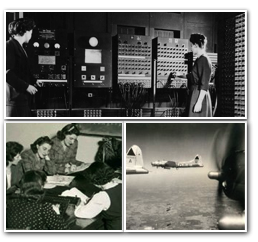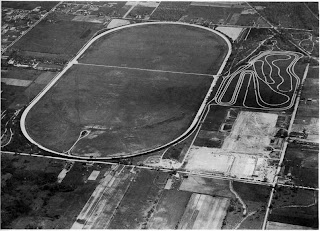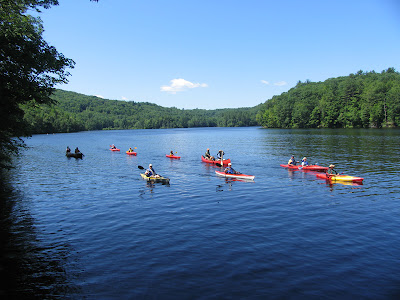 Scores of gigantic wind turbines in the Adirondacks’ northeastern and southwestern foothills are a startling site amidst historically bucolic scenery. The landscape appears “citified,” with structures nearly 40 stories high where the largest buildings rarely top 3 stories. It is a dramatic change, and a far cry from simpler days when family farms were prevalent. Few realize that in those “simpler days” of dairy farms, windmills were actually quite common across the region.
Scores of gigantic wind turbines in the Adirondacks’ northeastern and southwestern foothills are a startling site amidst historically bucolic scenery. The landscape appears “citified,” with structures nearly 40 stories high where the largest buildings rarely top 3 stories. It is a dramatic change, and a far cry from simpler days when family farms were prevalent. Few realize that in those “simpler days” of dairy farms, windmills were actually quite common across the region.
Of course, the windmills once dotting the North Country’s landscape were nothing like today’s behemoths, which stand nearly 400 feet high from the ground to the tip of a skyward-pointing blade. And, the windmills of old weren’t always efficient machines.
Wind technology took a tremendous leap forward in the 1850s thanks to Daniel Halladay, a Connecticut machinist. Halladay’s windmill not only pumped water, but automatically turned to face into the wind as it changed directions. Almost as important, he devised a way to control the speed of the blades (windmills are prone to destruction from within when operating at high rpm levels). Halladay established the US Wind Engine & Pump Company, setting up shop in Illinois. From the start, the business flourished.
Though his sales were focused on the country’s expansion westward, New York State was also experiencing dramatic growth, particularly in the remote northern Adirondack foothills, where pioneers faced a harsh climate and difficult living conditions. Halladay’s invention eventually helped turn some of those weather negatives into positives by taking advantage of wind patterns across upper New York State.
 In 1874, the railroad was expanding north from Whitehall towards Plattsburgh. Since steam engines require water, the line generally followed the shore of Lake Champlain. Tanks were constructed along the route where the rails approached the lakeshore. Steam pumps or windmills were used to fill the feeder tanks, which had a capacity of 33,000 gallons each.
In 1874, the railroad was expanding north from Whitehall towards Plattsburgh. Since steam engines require water, the line generally followed the shore of Lake Champlain. Tanks were constructed along the route where the rails approached the lakeshore. Steam pumps or windmills were used to fill the feeder tanks, which had a capacity of 33,000 gallons each.
As settlers moved north on both sides of the Adirondacks, windmill technology crept northward with them. Farming was necessary for survival, and the enormous workload was eased by mechanical devices like windmills. The description of one man’s operation about 18 miles south of Lowville was typical of the times: “… a beautiful farm of 280 acres, milks 35 cows, and is a model farm. House, barns, windmill pump, all systematically arranged.”
In situations like that, windmills often filled tanks placed on the upper floor of a barn. The water was then gravity-fed to the livestock below and piped to other locations as needed. The machine was also used to grind various grains. Early models were mounted on wooden frames, but many fell victim to the very power they were trying to harness, toppling before raging windstorms. Eventually, steel frames supported most windmills.
Wind power wasn’t just for individual homes and farms. In July 1879, H. H. Babcock & Sons of Watertown was hired to install a windmill at 1000 Islands State Park. Water was drawn from the St. Lawrence River to large tanks near the dining hall, and from there was conducted to the various cottages by galvanized iron pipe.
And at Hermon, a contract for $6,595 was signed with Daniel Halladay’s company to install a new waterworks system. Included were a wooden tank of 50,000-gallon capacity, a windmill with a wheel diameter of 20 feet, and more than a mile of piping. The frost-proof tank was 24 feet in diameter, 16 feet high, and 3 inches thick. It sat on a trestle 20 feet high, while the windmill stood on a trestle 80 feet high.
Many hotels, including the Whitney House in Norwood and the Turin House in Turin, used windmills to power their water systems. At Chazy, windmills pumped water from the quarries- at Port Henry, they filled water tanks for the trains- and at Saranac Lake, they fed the water supply of the Adirondack Sanitarium.
 In 1889, George Baltz of Watertown handled the Halladay display at the Jefferson County Fair, demonstrating that windmills furnished cheaper power than steam engines and could run a feed mill, a circular saw for cutting wood, or pump water.
In 1889, George Baltz of Watertown handled the Halladay display at the Jefferson County Fair, demonstrating that windmills furnished cheaper power than steam engines and could run a feed mill, a circular saw for cutting wood, or pump water.
Though Halladay’s products were widely known, he did have competitors. Some added their own modifications, and some were “copycats.” And they weren’t all products from afar. In 1882, an advertisement touted a windmill “warranted to take care of itself in high winds, equal to the best western mills, and is sold for half the money. It is manufactured at Potsdam.” It featured a self-regulator, and appeared to be based on Halladay’s own successful model.
In the late 1890s, most of the windmills in the Ticonderoga and Lake George area were products of the Perkins Windmill Company, which had already installed more than 50 units across the lake in Vermont. Though windmills in the Midwest were primarily for irrigation, most of those in the North Country supplied water to homes, businesses, and farm animals.
Wind power did face competition from other sources. Gasoline engines became more and more common, offering a reliable alternative. However, they were expensive, noisy, and costly to run. An operator had to be present to start and stop a gas engine, while windmills employed a system of floats to start and stop filling the tanks automatically. A once-a-week oiling was the only required maintenance. The biggest problem at the time was that gas engines ran when you wanted them to, but windmills depended on the weather.
The giant turbines we see in northern New York today are not a new idea. In a peek at the future, Charles Brush of Cleveland, Ohio demonstrated in 1888 the first use of a large windmill to generate electricity. As early as 1895, observers noted that windmills were “destined to be much used for storing electricity. We predict an immense future for the windmill industry.”
In 1910, a farm in America’s Midwest employed windmills to charge a bank of batteries. Wind power provided electricity to light the farm and operate the equipment. When the wind didn’t blow, the farm ran on battery power for a few days.
 By 1925, wind turbines had been used to run refrigerators, freezers, washing machines, and power tools. And in 1926, the NYS Fair urged farmers to purchase windmills, using a 12-foot-high model to show the benefits they might enjoy. It was an enticing glimpse at the potential of electricity. Ironically, the popularity of windmills soon became their undoing.
By 1925, wind turbines had been used to run refrigerators, freezers, washing machines, and power tools. And in 1926, the NYS Fair urged farmers to purchase windmills, using a 12-foot-high model to show the benefits they might enjoy. It was an enticing glimpse at the potential of electricity. Ironically, the popularity of windmills soon became their undoing.
Though they were a wonderful source of cheap power, the main problem was intermittent operation. When the wind didn’t blow, the tools didn’t go. Battery storage systems were only good for brief periods, and people wanted power WHEN they wanted it. Soon, another overriding factor arose—the growing need for huge amounts of electricity.
By the late 1930s and 1940s, constantly flowing electricity was the goal, relegating wind power to the background of the energy battle. It was still used, and advancements were pursued, but success was limited. One notable effort was the huge Smith-Putnam windmill installed atop Grandpa’s Knob near Castleton and Rutland, Vermont, in 1941.
Though less than half the size of today’s models, it was still large, featuring a 16-ton, 175-foot steel rotor that turned at 28 RPM. Occasional use ended abruptly in 1945 when metal fatigue caused the blade to snap, hurling a huge section 1000 feet down the mountain.
In the North Country, windmills have returned after a long hiatus. They stand ten times taller than their predecessors (in 2012, the new ones will be 492 feet high), and now pump electricity instead of water. Where potato, hop, and dairy farms once dominated, the wind farms of today stand above all others.
Photos: Above, windmills 400 feet tall at Churubusco (and another under construction in the foreground). Middle Right: Typical use of windmill to fill railroad water tanks. Middle Left: Halladay windmills were offered by George Baltz of Watertown. Below, advertisement for Halladay’s company.
Lawrence Gooley has authored ten books and dozens of articles on the North Country’s past. He and his partner, Jill McKee, founded Bloated Toe Enterprises in 2004. Expanding their services in 2008, they have produced 19 titles to date, and are now offering web design. For information on book publishing, visit Bloated Toe Publishing.
 Women’s Rights National Historical Park will show the documentary film Top Secret Rosies this Friday and Saturday, March 30 and 31, at 12:00 noon.
Women’s Rights National Historical Park will show the documentary film Top Secret Rosies this Friday and Saturday, March 30 and 31, at 12:00 noon.














